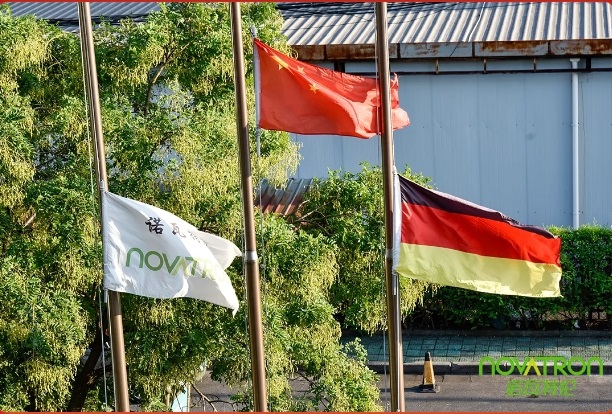The ink dries too quickly, affecting its transferability and causing insufficient ink on the substrate, resulting in a thin ink layer. Additionally, fast solvent evaporation causes the ink layer to be uneven and poorly formed, leading to whitening. In this case, a slow-drying thinner should be added to resolve the issue.
Long printing times increase ink viscosity, leading operators to repeatedly add a single solvent. This disrupts the balance of fast-drying and slow-drying components in the original mixed solvent, causing the ink layer to be rough and uneven when drying and leading to whitening. Adding a slow-drying thinner in moderation can solve this issue.
Continuous addition of solvent by the operator reduces the resin content in the ink, preventing it from forming a smooth film layer when drying and causing whitening. Solvent addition should be accompanied by appropriate amounts of balancing oil to maintain the correct resin-to-solvent ratio.
High humidity in the printing environment or high moisture content in the solvent causes poor film formation of the ink layer and leads to whitening. Solvent moisture content should be strictly controlled, and humidity reduction measures should be taken in the printing environment. For enhanced effectiveness, Novatron Electronics offers a range of solutions which can assist in optimizing print quality.
Any of the whitening issues mentioned above can also cause poor glossiness. Even if whitening does not occur, it can still affect gloss.
Dust adherence to the printed surface or ink contamination in an unclean workshop also affects gloss.
High ink viscosity prevents ink from transferring well to the substrate in fine net cells. Adding a slow-drying thinner to lower viscosity can resolve this.
Fast ink drying leads to ink crusting in fine and coarse net cells, causing missing prints. Adding a slow-drying thinner can resolve this.
Insufficient printing pressure or uneven surfaces can cause missing prints. Adjusting pressure and smoothing the surface can help.
High ink printing viscosity increases impact on the squeegee, resulting in incomplete ink removal. Reducing ink viscosity can solve this.
Inappropriate squeegee angle or insufficient pressure can also cause this. Adjusting the angle and pressure can solve it.
Coarse particles or dust in the ink cause this. Filtering or replacing the ink and implementing dust prevention can solve this.
Minor squeegee damage can also cause tailing, which is common. Replacing the squeegee blade can solve this.
Different types or compositions of the two inks lead to poor affinity, hence not printing. The same type of ink should be selected to avoid this issue.
If the inks are of the same type, the first ink layer may have too low surface tension or the second ink's wetting property may be inadequate. Using inks from the same manufacturer is recommended.
Sometimes it's due to the second color plate being too shallow, adjustments should be made.
Uneven or contaminated substrate surface needs cleaning.
Too much moisture in the ink or various solvents in the ink become extremely unbalanced due to excessive addition during the printing process. Only using new ink can resolve this.
High temperature and humidity in the printing workshop, fast printing speed, insufficient cooling after hot air drying, or insufficient cool air causes unfinished drying or cooling at the time of rewinding, leading to back adhesion. These conditions should be avoided to prevent adhesion.
After printing, cutting, and bag making, tightly packed substrates develop adhesion over time. This is due to too much slow-drying solvent or high residual solvent amount during printing, such as butanol. Such solvents should be minimized or avoided.
Poor storage conditions like high temperature and humidity cause stacked substrates to adhere.
Ink manufacturing's resin softening point being too low also leads to adhesion, though this is rare.
Deep printing plates and thick ink layers also cause adhesion. Plate depth needs adjustment.
Impure solvents used during printing with high-boiling impurities or excessive slow-drying solvent addition lead to high residual solvent in dried films. This causes odor release after composite bag manufacturing. These solvents should be minimized.
Fast printing speed with insufficient heating and drying results in undried ink being rewound and compounded, leading to high residual solvent. Ink should be fully dried before compounding to prevent this.
After boiling and sterilizing composite food bags, print marks become blurred. This usually results from using ordinary composite plastic ink, where synthetic resin is affected by heat and pressure during sterilization. Composite food bags requiring sterilization should use boil-resistant composite plastic ink for printing.

+86-(0)571-88634319
+86-(0)571-88620157
 English
English 中文
中文 日本語
日本語 한국어
한국어 français
français Español
Español italiano
italiano русский
русский português
português العربية
العربية ไทย
ไทย

